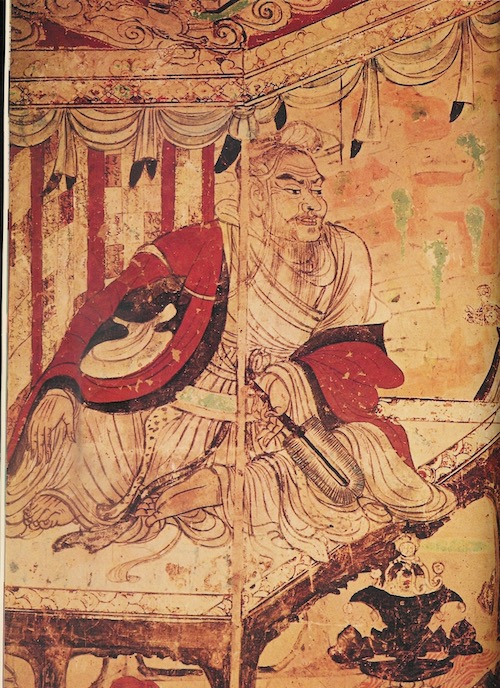Vimalakirti's teaching is perhaps the gem of Buddhist literature of the great vehicle. Full of life and humor, it has neither the prolixity of the Mahayana sutras nor the technicality of the Buddhist commentaries, whose science and information it nevertheless shares.
Far from getting lost in the desert of abstract and impersonal doctrines, its author reacts at every turn to the depth of Buddhist law to which he spares neither criticism nor sarcasm. He is a virtuoso of paradox who pushes independence of spirit to the point of irreverence.
~ Etienne Lamotte ~
Vimalakirti
BUDDHIST CENTER USA
The goddess said, “This is the teaching of conceited people, that liberation comes from the cessation of greed, hatred and delusion.
For those who are free of conceit, the nature of liberation is nothing but greed, hatred and delusion.” In the teaching of Vimalakirti.

who is
Vimalakirti?
Within Buddhism, Vimalakirti stands apart as the only layman who holds a prominent position. In the early tradition, monks were the role models. The most inspiring examples were the close disciples of the Buddha such as Sariputta, Moggallana, Ananda and others.
With the emergence of the Mahayana tradition, the bodhisattva was the ideal to be followed. The figure of the bodhisattva is closer to that of a god than a human being, a god that is mainly concerned with the wellbeing and freedom of others. While the monks renounced the world, the bodhisattvas were akin to celestial beings. Both were somehow disconnected from the lay community.
By the 2nd century AD, there suddenly appeared the figure of a layman who was equal to the most respected monks and the highest bodhisattvas, Vimalakirti. In the Buddhist literature, there was already a long tradition of using fictional figures as a means to express some aspect of the Buddhist doctrine, not unlike the character encountered by Socrates that provided him with the opportunity to explore important questions. The character of Vimalakirti is a pretext to express the teaching on emptiness ⎯ the ungraspability of phenomena ⎯ the most difficult aspect of the Buddhist teachings. He manifests this aspect by presenting seemingly contradictory characteristics: he lives alone yet he is surrounded by many servants; he lives a life of celibacy yet has a wife and children. He takes the teachings of the Buddha into every context: bars, brothels, schools and the market place. Vimalakirti is completely integrated within Indian society and, as a fictional figure, he illustrates integration in any type of society.





